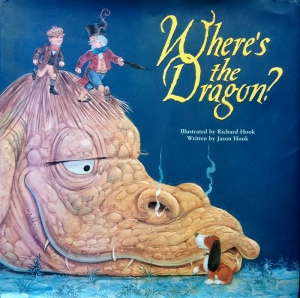On a Bonfire Day when we remember, remember to protest the plot against our precious libraries – a plot that seeks to put a match to the idea that ideas, imagination and inspiration may be freely available to all, rich or poor – it is a good time to write of books and the sparks and fireworks that can fly from their pages.

Where’s the Dragon?
There is a magic in books, as all readers know. Every book holds within it the power to breathe life into characters, creatures and entire worlds. These things begin in the imagination of the writer. They start with the spark of an idea, that magical, mutable thing that comes from nothing, from nowhere, from something, somewhere. That spark lights the furnace in which the idea might, if you are lucky, survive the heat long enough to be forged into a story.
Ah, but that story is, when left in the darkness, a lifeless creation. It requires a lightning bolt to animate it. And that lightning bolt is cast not by the writer but by the reader. It is the reader who discovers the story in a book and grants it life. The more readers who read it, the brighter the story burns. The more readers who return to it, the higher its fireworks fly. Most magical of all, the story starts to take on a life, or lives, of its own. It is told and interpreted. It is given as a gift. It is borrowed from a library. It starts to cast sparks of its own.
This is a magical process indeed with a children’s story, which finds its light from a bedside lamp and its life from the regular breaths of a bedtime reader. I once wrote of a fire-breathing dragon, so big that the closer people got to him the harder they found him to see. That was the spark, and it began to breathe fire through the alchemy of my artist father, Richard Hook, in the book Where’s the Dragon? That was back in 2003. To our delight, the dragon was summoned in sufficient bedtime stories for him to grow old. He hides away for a while, and then emerges in the most surprising of places. Today, when I give talks at schools, it is the old dragon that children always seem to know about. It is the story of the dragon so large that he can’t be seen that they still want to hear. He lives on, both as a glowing memory of my father, and as a story that is still being told. He is almost old enough for a grown-up child to hand him down to the next generation, and what finer fate could there be for a dragon, for a story, than that.
If the spark of one idea, one story, one book, survives to cast its own sparks through the readers who breathe life into it, just imagine how many sparks and fireworks fly from a library. A library is a crucible filled with a thousand hot metals, each one of which might turn to gold in a child’s imagination. It is an infinite free firework display, where any firework is possible. It is a fire-breathing dragon, which appears different to every child who discovers it, and which every child should be free to discover for themselves. Otherwise, we might just as well tell our children to stop believing in dragons.

Thank you for raising your very justifiable fears regarding our libraries. They are always an easy option when councils are looking for ways to save money but, once closed, they rarely return and are such a tremendous resource for all the community.
LikeLiked by 1 person
Thank you, John. Yes, a precious resource, a vital hub for our communities, and a place that offers opportunities to all.
LikeLike